We cast but a tiny light upon this barren, broken Earth

Nothing changes. Nothing moves. Silence envelops this plain.
Could it be our greatest fears are true? Are we not as bright as we’ve imagined?
Our light is fading. Will this great Earth even notice?
What will be when there is nothing left to remember?
Amurrca!
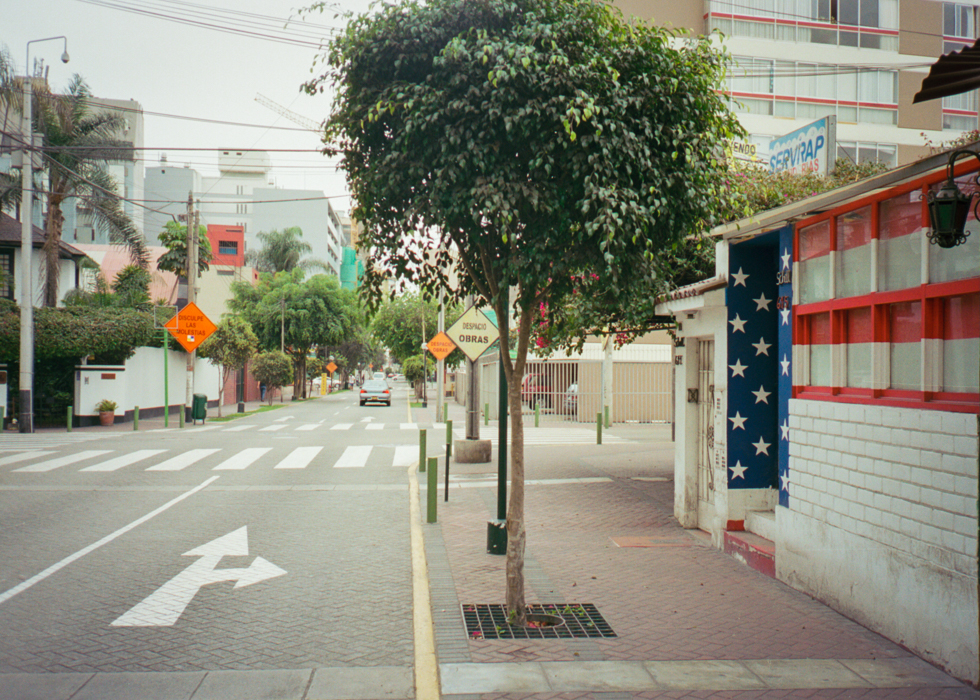
This wasn’t quite what I expected to find on a Christmas morning run through the deserted streets of Lima, Peru: A storefront emblazoned with a giant, garish US flag.
It turns out that this was the site of the American Embassy Cafe, a joint opened here by a Texan (naturally) to share with Lima all of the greatest cultural and culinary wonders of the United States (buffalo wings, baseball, burgers, and surely the occasional chant of “USA! USA! USA!”). Unfortunately, the place seems to have shut down, so I was forced to head elsewhere to local restaurants and eat my way through all of the delicious ceviche, causas, anticuchos, aji de gallina, and so so many pisco sours. Rough way to survive, I know. :p
Kodak Portra 160 in a point and shoot Olympus Stylus Epic, on the run.
#FilmisNotDead, but Lunch is More Profitable

An interesting adaptation to changing times can be found at Foto Café in Valparaíso, Chile. As digital took over the photographic world, this former camera store and film developing shop opted to diversify, giving up equipment space and darkrooms in favor of a new kitchen and cafe space. The shop survives today mostly on the business of the cafe, but retains a small camera and print shop on the side (digital only these days), a gallery space, and the fantastic original brick and iron architecture of the space.
I ran into a little confusion here after being told that they didn’t have menus, but managed to pick a tasty gnocchi and local beer out of the list of offerings that the waitress rattled off for me. (It turns out that I caused the confusion by asking for “el menú”, which, in Chile, generally refers to “el menú del día”, a prix fixe meal of the day. The cafe wasn’t offering such a meal on that day, and I should have been asking for “la carta”, which seems to be the correct way to ask for a printed menu here. The more you know.)
The lunch was tasty, the space was nice, and I’d at least prefer to think that the kitchen area was surely thoroughly cleaned and is definitely not contaminated with any nasty photography chemicals…I hope.
Shot on Kodak (appropriately) Portra 160 with the Olympus Stylus Epic point and shoot.
Alone with Venus and Jupiter
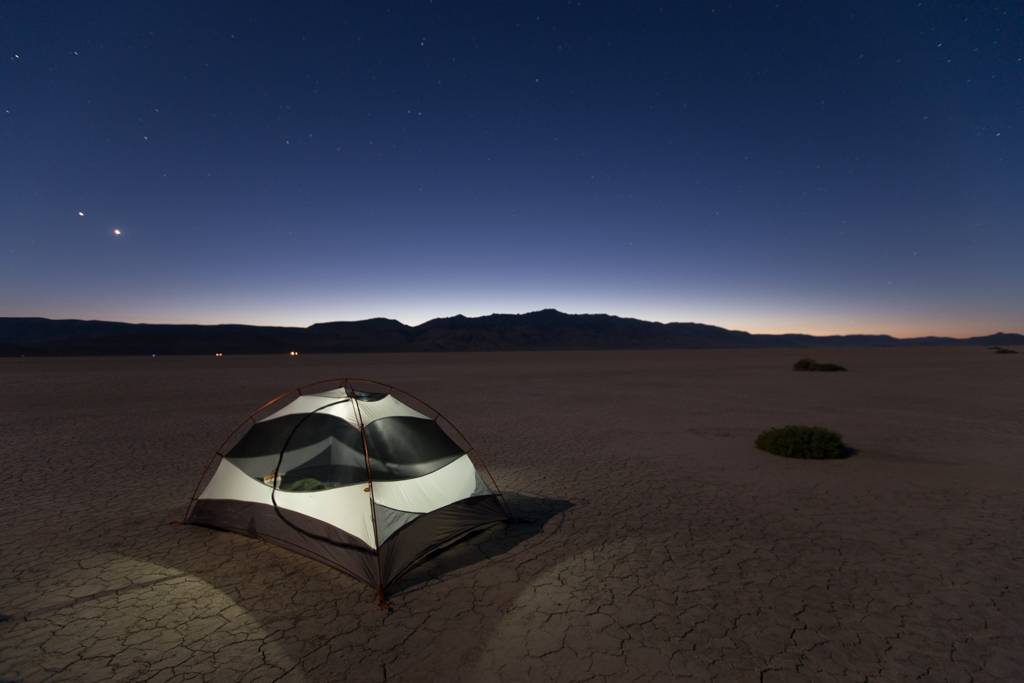
Woo, lucky me! There was still an open campsite available when I made it to the Alvord Desert! I was worried it would be full.
I didn’t actually realize it at the time, but those two brightest points in the sky are Venus and Jupiter keeping me company in the desert from many millions of miles away. Those other bright lights on the horizon are the campfires of the nearest humans; They’re a bit closer at around 4 miles away, but still far enough away to provide me with what was surely the quietest and most peacefully isolated night I’ve ever experienced.
I feel quite lucky that my poorly planned journey through eastern Oregon brought me to such a place, and equally lucky that my Subaru started up without any trouble in the morning when it came time to leave… 🙂
Can’t Rain On My Parade

A little something from the street during the Giants’ rainy World Series parade last Halloween. I got there pretty early, but got bored of standing on the sidelines waiting for the parade to start, and instead spend most of the morning wandering up and down Market Street, doing a little people watching and photographing until the buses started moving. The little toy-like waterproof Canon Sureshot A1 again performed admirably in the moments when the rain was coming down too hard to pull out a more valuable camera. For a $20 eBay camera, I’ve been entirely impressed by the little beast.
All in all, the atmosphere for our 3rd WS parade in 5 years was electric, despite the rain, and totally worth the soaked shoes and numb feet. 🙂
I’m not going to jump on the bandwagon and pretend I’m a diehard Warriors fan, as I haven’t followed the sport that closely since my team disappeared into Oklahoma once upon a time and hasn’t been seen since. However, I’d love to see them to pull this off and bring Oakland it’s own championship parade before SF finally steals the team back to this side of the bay.
(Portra 400, Canon Sureshot A1)
Universalities: The March of “Progress”

A little something I noticed in Lima that reminded me of home: displacement of existing residents in favor of developments for the wealthy. Throughout Miraflores, wedged between the new sleek glass towers, several older properties stand as small signs of what existed here before. Some are well lived in, some are in various states of disrepair. Many were easy to pick out by the large signs painted on their exterior walls, such as this one:
“Private Property. Not for sale.”
Things are a bit different here in San Francisco, where it’s mostly renters with no ownership of their homes and apartments who are being pushed out by eviction and rent increases, while it appears that most of these homes in Lima are privately owned. However, that the owners feel it worthwhile to scrawl these large messages on their homes suggests that there must be some pressure on these homeowners in Lima to sell. Where that pressure comes from and in what form it arrives, I could only guess, but I certainly wouldn’t be surprised to learn that it follows some version of the typical formula with those with the money influencing those in the government to tilt things in their favor.
Though the mechanisms and policies are likely different, as someone living in San Francisco, this underlying struggle all felt really close to home.
Another obvious difference was that, here in San Francisco, while pretty much couldn’t give two fucks about the people living in them, there is no way in hell we’re going to let you lay a hand on our historic buildings. In Lima, on the other hand, it seems that nearly the entire district has been leveled and replaced by a forest of glass towers in the past 40 years. I have no idea what Miraflores looked like before, but the neighborhood of today is sleek and shiny and new, and felt so sterile. The restaurants were great, the streets were safe, there was that cute little park with the cats, but it felt as though there was no history here, no soul. I guess San Francisco has that going for it: When all of the people and businesses that made San Francisco interesting and unique are gone, at least they’ll leave behind a pretty shell…
Do I sound too dejected here? I’m just tired of hearing of friends, acquaintances, and wonderful people I’ve never had the pleasure of meeting who have given their all to create some good in this city unceremoniously shown to the door.
San Francisco, my adopted home, the place I never planned to stay and the place where I discovered something special that I couldn’t imagine leaving: I love you like no other place, and I still find myself delighted each time I catch a little glimmer of the magic that makes you so special, but you can also be a bit of a downer these days.
I don’t have the answers. Part of the solution certainly lies in building a fuckton more housing, but surely there’s more to it than just creating enough boxes to put everyone in. Maybe we’d make some progress if we all could just try giving a shit about the hardships and struggles that our friends/neighbors/fellow San Franciscans face. Maybe we should see what happens when we stop and actually do something to help each other out. There’s still a lot of good here, what can we do to save and nurture that magic?
I’m sure there’s more that I could be doing day to day, and I’m sure that’s true for most of us out here.
(Taken on a cliffside run down el Malécon in Lima, with Kodak Portra 400 in an Olympus Stylus 120: A fairly shitty little $20 used camera, but it fits well in my hand when I run…)
Day 318: Time Keeps Slipping
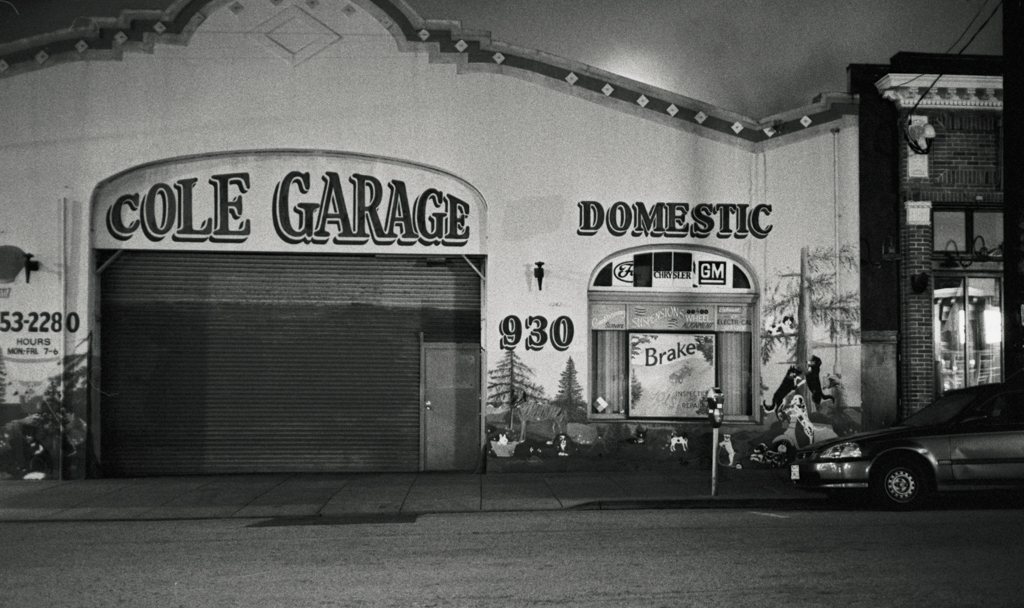 Day 318: November 13, 2014: Cole Valley
Day 318: November 13, 2014: Cole Valley
Regaining some stability in life after moving to a new apartment, and beginning to revisit my neglected photos, this one came up and seemed appropriate for the times.
News came last week that Cole Garage is being evicted to make way for a new development, so it joins the handful of local businesses that found their way into my 2014 photo project, only to disappear within the following year. Cole Garage also follows the nearby laundromat, which disappeared within the same week. It continues to surprise me how fast things change around here. Where does this trajectory lead? Honestly, there are a lot of forces at work which show no signs of slowing, so I don’t expect the course to change any time soon, but I also can’t imagine what the result could possibly look like when some form of equilibrium is eventually reached. There’s always another use for a space that can afford higher rent than the current tenant, but what happens when all of the neighborhood services are priced out of the neighborhood? What fills that gap for those who own a vehicle, or those whose $3000 rent doesn’t include access to laundry, or all of us who rely on the next service to go, whatever else that may be?
Are we heading for some weird form of urban suburbanization where our neighborhoods are taken over by blocks of modern condos and chain retail outlets that can afford to absorb the high costs? Are we headed for a city where those of us who can pay for it summon cheap new “sharing economy” labor for all of our needs, and those of us who can’t…well, surely you can make enough to afford it by driving a few more uber shifts, right? Wait, what’s that you say? You can’t drive today because you need to take your car in for service? Oh, I don’t think we do that around here anymore…
(Kodak TriX 400 in an Olympus Stylus Epic point and shoot, stand developed because I screwed up my attempt to trick the camera into shooting it at 1600 ISO, and had no idea what settings it actually used)
Day 355: Stuck in the San Salvador Airport for 7 Hours? Try This!
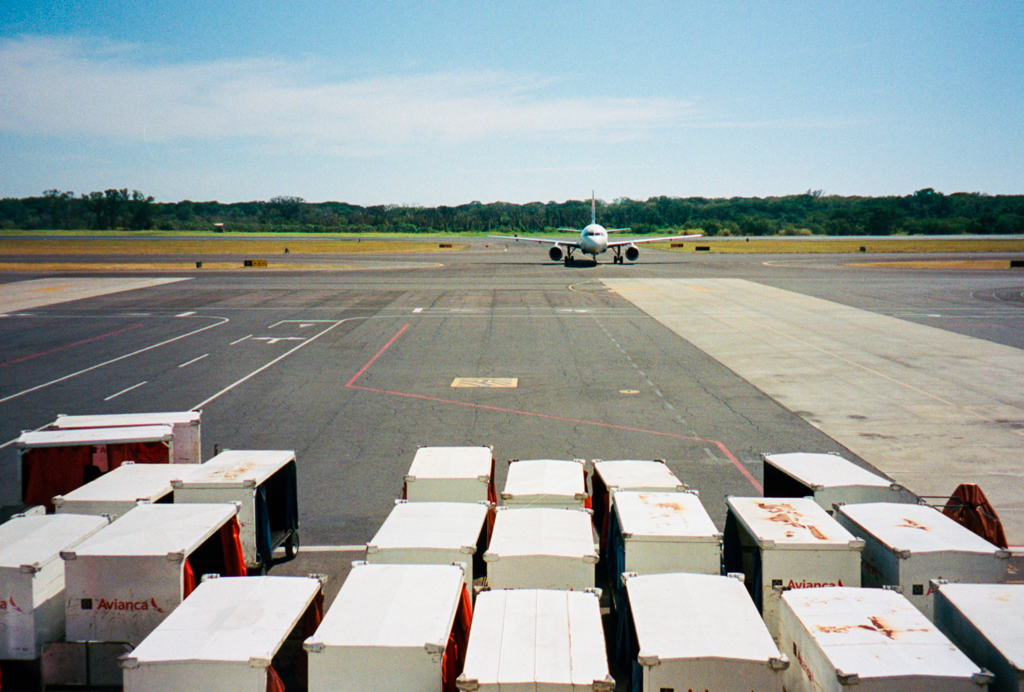
Day 355: December 21, 2014: San Salvador Airport, El Salvador
You should plan better next time. There is nothing to do in the San Salvador Airport.
(Kodak Portra 400 in a cheap but obnoxiously silver Olympus Stylus 120)
El Malecón: Construction on the Cliffs in Miraflores
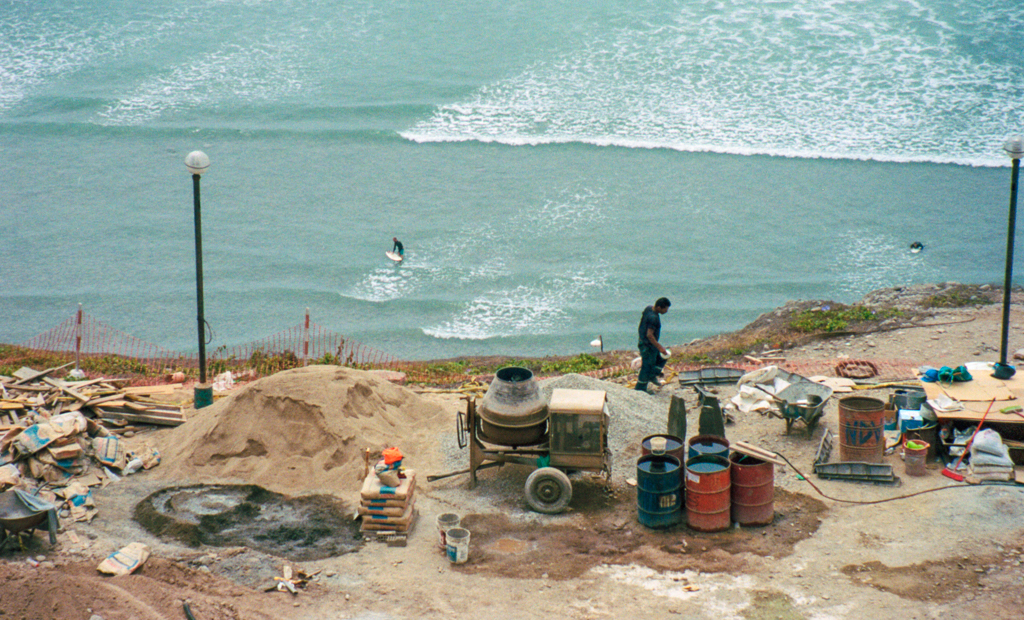
For a city on the sea, Lima isn’t particularly known for its beaches. If the rocky beaches and cold water near Miraflores aren’t enough to keep you away, you also have the natural barrier of the high seafront cliffs and the man-made barrier of the Costa Verde highway, which is currently being widened, to cross before you can get to that frigid Pacific. Only the heartiest of surfers seemed to make it out, because apparently no barrier can keep a surfer away from a wave.
It didn’t help that nearly every staircase down the cliffs and bridge over the highway along the 6 mile El Malecón path were closed off and half destroyed during the holidays. According to the the local news, it appears that the dilapidated paths and bridges were closed as part of a large rehabilitation project, but the work then stalled and was sort of abandoned for a couple months. It sounds like they’ve since been completed and reopened in recent days, so walking access has been restored for anyone who can’t resist a dip in the cold ocean.
It’s unclear what the rest of the construction on the cliffs and down on the beach is for, but judging by the presence of a maximum of a single active worker at each site at any time, it’s probably safe to say that, like the bridges, these projects will take some time to come to fruition.
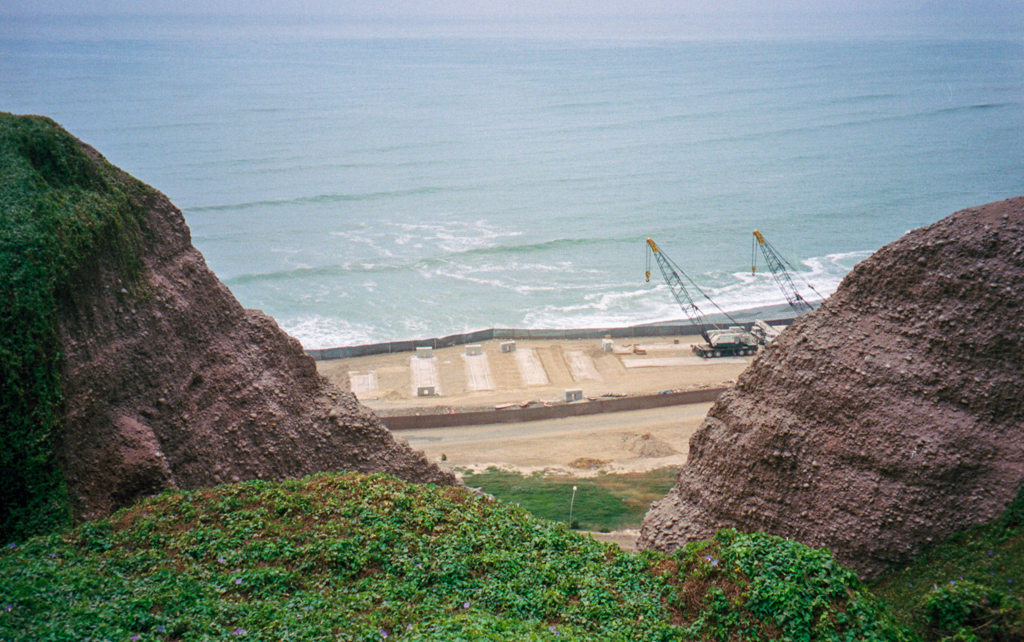

Some Things are Universal

Christmas Day in Lima, Peru.
Christmas to me is always a time for family, for visiting my hometown, for returning to all of the things that feel eternally familiar. To spend the holidays thousands of miles away from home, in a new city, in a new country, on a new continent, on a whole different hemisphere, all while speaking a language I was at mediocre with at best, felt about as unfamiliar as it gets.
Then I discovered that, just like home, you can still get good Chinese food when everything else is closed on Christmas Day. Some things are universal. 🙂




